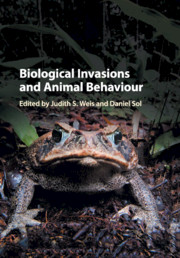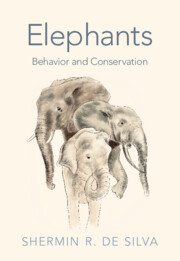Conservation Behavior
Conservation behavior assists the investigation of species endangerment associated with managing animals impacted by anthropogenic activities. It employs a theoretical framework that examines the mechanisms, development, function, and phylogeny of behavior variation in order to develop practical tools for preventing biodiversity loss and extinction. Developed from a symposium held at the International Congress on Conservation Biology in 2011, this is the first book to offer an in-depth, logical framework that identifies three vital areas for understanding conservation behavior: anthropogenic threats to wildlife, conservation and management protocols, and indicators of anthropogenic threats. Bridging the gap between behavioral ecology and conservation biology, this volume ascertains key links between the fields, explores the theoretical foundations of these linkages, and connects them to practical wildlife management tools and concise applicable advice. Adopting a clear and structured approach throughout, this book is a vital resource for graduate students, academic researchers, and wildlife managers.
- Explores the field of conservation behaviour through an easy-to-use structured approach, suitable for both academic researchers and wildlife managers
- Offers concise and practical advice regarding the uses of behavioural theory and knowledge, applicable for wildlife managers who want to improve their practice
- Condenses the field of conservation biology into one structured, user-friendly volume that is adaptable for conservation behaviour courses
Reviews & endorsements
'This volumes takes a comprehensive and practical look at a crucial question in wildlife conservation … [it] has a very practical feel throughout … [and] every chapter is exceptionally rich in practical examples, with useful citations that form classic case studies of the principle involved. … [The volume is] rigorous and detailed, yet readable, and will appeal to a wide audience.' Arik Kershenbaum, The Quarterly Review of Biology
Product details
June 2016Adobe eBook Reader
9781316560167
0 pages
0kg
31 b/w illus. 3 tables
This ISBN is for an eBook version which is distributed on our behalf by a third party.
Table of Contents
- List of contributors
- Preface
- Part I. The Integration of Two Disciplines: Conservation and Behavioral Ecology:
- 1. Introduction: the whys and the hows of conservation behavior Oded Berger-Tal and David Saltz
- 2. Evolution and conservation behavior John P. Swaddle
- 3. Learning and conservation behavior: an introduction and overview Zachary Schakner and Daniel T. Blumstein
- Part II. Anthropogenic Impacts on Animal Behavior and their Implications for Conservation and Management:
- 4. Behavioral rigidity in the face of rapid anthropogenic changes Oded Berger-Tal and David Saltz
- 5. Anthropogenic impacts on behavior: the pros and cons of plasticity Daniel I. Rubenstein
- Part III. Behavior-Based Management: Using Behavioral Knowledge to Improve Conservation and Management Efforts:
- 6. The role of animal sensory perception in behavior-based management Esteban Fernández-Juricic
- 7. Behavior-based contributions to reserve design and management Colleen Cassady St Clair, Rob Found, Aditya Gangadharan and Maureen Murray
- 8. Behavior-based management: conservation translocations Ben D. Bell
- 9. From individual behavior to population viability, implications for conservation and management Carmen Bessa-Gomes and François Sarrazin
- 10. Manipulating animal behavior to ensure reintroduction success Debra M. Shier
- Part IV. Behavioral Indicators:
- 11. Direct behavioral indicators as a conservation and management tool Burt P. Kotler, Douglas W. Morris and Joel S. Brown
- 12. Indirect behavioral indicators and their uses in conservation and management Oded Berger-Tal and David Saltz
- Index.








